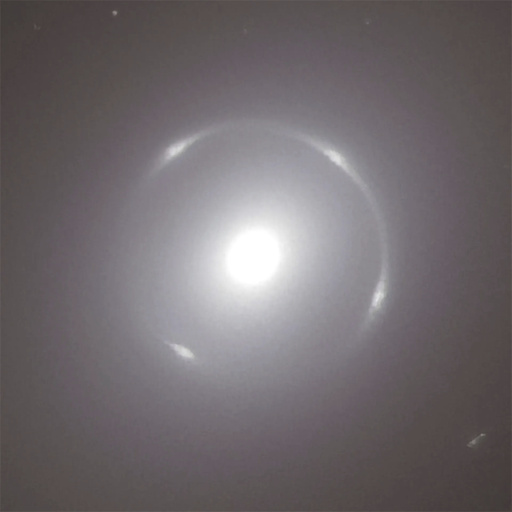
CAPE CANAVERAL, Fla. — Astronomers announced on Monday that Europe’s Euclid space telescope has made a remarkable discovery: a distinct halo of bright light enveloping a nearby galaxy. This type of halo, referred to as an Einstein ring, surrounds a galaxy located approximately 590 million light-years away, which is relatively close in the vast expanse of the universe. To put it in perspective, a light-year equals about 5.8 trillion miles.
Researchers have been aware of this particular galaxy for over a century, thus the revelation of the bright glowing ring caught them off guard. The findings were published in the journal Astronomy and Astrophysics. An Einstein ring occurs when light from a more distant galaxy is bent due to gravitational forces, creating a scenario where it completely encircles a closer galaxy. In this instance, the galaxy responsible for creating the ring is positioned more than 4 billion light-years away.
The phenomenon where gravity distorts light from a distant galaxy is known as gravitational lensing, which pays homage to Albert Einstein’s theories. Lead researcher Conor O’Riordan from Germany’s Max Planck Institute for Astrophysics commented on the significance of this type of strong lensing event, noting its rarity and how it proves to be a valuable scientific tool. He emphasized, “This one is particularly special, because it’s so close to Earth and the alignment makes it very beautiful.”
Euclid was launched from Florida in 2023, and NASA is actively participating in its mission, which focuses on investigating dark energy and dark matter throughout the cosmos.

